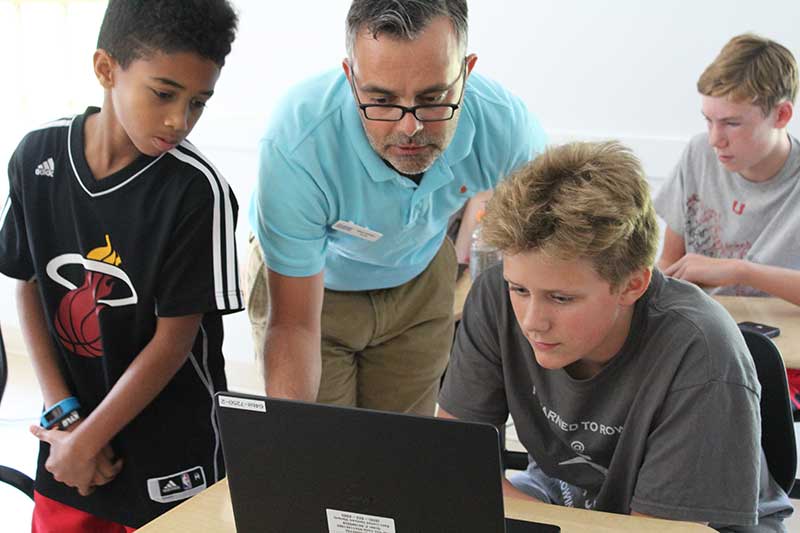By Amanda Cooper ’18
Student Intern, Marketing and Communications Department
The students in the Moorestown Friends Senior Scholars Virtual Rocket Engineering: Kerbal Space Program class explored the physics behind rocket engineering through virtual and hands-on projects. During the weeklong course, the students studied aeronautical engineering concepts such as lift, thrust, and structural integrity. Then they built their own physical rockets. The students used what they learned from creating their rockets to conceptualize, design, re-design, and prototype their own rockets in the virtual Kerbal Space Program.
At the beginning of the week, the program began with the students building their own physical rockets using a variety of prototypes to assess which ones flew the farthest. The students then launched their assortment of rockets, including a water rocket which they inflated with a bike pump, to inform how pressure impacted rocket velocity. The students also tested rockets made of paper, rockets with play dough inside, and rockets that were built around PVC pipes. The class concluded that some rockets worked better than others because they were structured differently. “The rockets that had better fins seemed to work better,” said Emmet, a rising 7th grader, “and duct tape around the rocket definitely helped, too.”
After the students tested out different types of rockets, they were introduced to the diagnostic portion of the online Kerbal Space Program. Using the program, the students built simple rockets and tried to project them into orbit. Some of the virtual rockets they built were successfully launched, while others still had to be tweaked.
Using the skills they acquired from initially experimenting with the program, the students created rockets that launched into orbit. “My rocket flew by the Moon and even got close to Mars!” exclaimed Colin, another rising 7th grader. By the third and fourth day of the program, students were launching rockets to the Moon and to other far reaching parts of the virtual solar system.
After a week of learning about the engineering and physics behind rocketry, all of the students were able to virtually launch their rockets into space and into orbit. The hands-on building, combined with the virtual creation of rockets using the Kerbal Space Program, made for a fun-filled week of learning.

